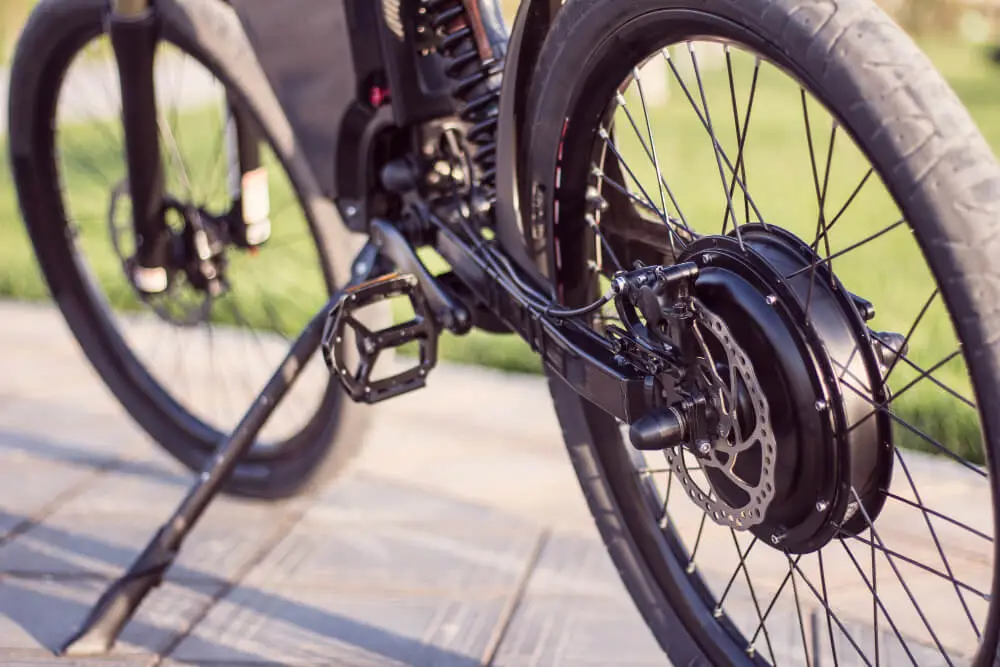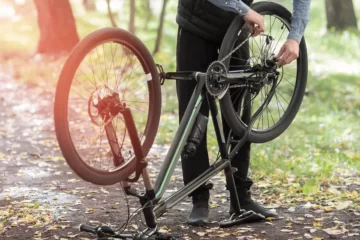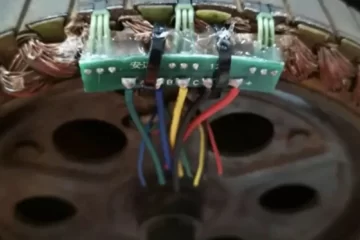Electric bicycles, or ebikes for short, are a remarkable fusion of traditional cycling and modern technology. They are designed to provide riders with an enhanced and effortless cycling experience. By incorporating an electric motor, ebikes amplify your pedaling power, making it easier to conquer hills, cover longer distances, and arrive at your destination without breaking a sweat.
In this article, we will unravel the mysteries of ebikes and provide you with a detailed understanding of what is an ebike and how does it work. From the basics to advanced insights, we’ll explore every aspect of these revolutionary two-wheelers.
Basic Concept of Electric Bikes
At its core, an electric bike is a bicycle equipped with an electric motor and a rechargeable battery. This motor assists the rider in pedaling, providing varying levels of assistance, and can even propel the bike without any pedaling effort.
Let’s break down the key components and mechanics of an ebike.
Components of an eBike
To understand how eBikes work, it’s essential to familiarize ourselves with their key components

1. Electric Motor
The heart of an eBike is its electric motor. These motors come in various types and can be located in different parts of the bike, but their primary function is to assist the rider by providing additional power when pedaling.

2. Battery
eBikes are powered by rechargeable lithium-ion batteries. These batteries store electrical energy that is used to drive the motor. The capacity and quality of the battery can significantly impact the eBike’s performance and range.

3. Controller
The controller is essentially the brain of the eBike. It manages the interaction between the rider and the electric motor. Riders can adjust settings, such as the level of assistance and speed limits, through the controller.
4. Pedal Assist Sensor
Most eBikes feature a pedal-assist sensor that detects the rider’s pedaling motion and cadence. This sensor sends signals to the controller, which then determines how much assistance the motor should provide.
5. Display
An LCD or LED display on the handlebars allows riders to monitor crucial information such as speed, distance, battery level, and assistance mode. Some displays also include navigation and additional features.

6. Throttle
While not present in all eBikes, some models include a throttle control similar to that of a motorcycle. This allows the rider to control the motor’s speed without pedaling.

How Does eBike Work?
Electric bikes, also known as eBikes, have gained significant popularity as eco-friendly and efficient modes of transportation. But have you ever wondered how they work?
1. Pedal Assist Mechanism
- When you start pedaling, a pedal-assist sensor on the eBike detects your motion and the speed at which you are pedaling (cadence).
- These signals are sent to the controller, which is like the brain of the eBike.
2. Controller Decision
- The controller analyzes the information from the sensor and determines how much electric assistance is required based on your pedaling activity.
- It decides the level of support needed to make your ride comfortable and efficient.
3. Motor Assistance
- The controller then communicates with the electric motor on the eBike.
- The electric motor starts providing assistance by adding power to your pedaling efforts.
- This assistance makes it easier for you to pedal, especially uphill or when maintaining higher speeds.
4. Power Source
- The electric motor draws its power from a lithium-ion battery typically mounted on the eBike.
- The battery stores electrical energy obtained from charging, and this stored energy is used to power the motor when needed during your ride.
5. Monitoring and Control
- The handlebar-mounted display provides real-time information about your ride, including your current speed, the distance you’ve traveled, and the remaining battery capacity.
- Riders can use this information to adjust their riding style and optimize the use of electric assistance.
6. Safety Features
- Many eBikes are equipped with safety features, such as regenerative braking.
- Regenerative braking not only helps you slow down safely when you apply the brakes but also converts some of the braking energy into electrical energy, which is fed back into the battery.
7. Battery Management
- The battery management system (BMS) is responsible for safeguarding the battery.
- It prevents issues like overcharging, over-discharging, and overheating, ensuring the longevity and safety of the battery.
Types of Electric Bike Motors
Electric bike motors can vary in terms of location, power output, and functionality. The three primary types of motors are:
1. Hub Motors
These motors are located in the hub of the wheel, either in the front or rear. They are known for their simplicity and ease of maintenance.
2. Mid-Drive Motors
Mid-drive motors are positioned near the bike’s bottom bracket, providing a more balanced weight distribution. They are efficient in utilizing the bike’s gears for various riding conditions.
3. Crank Motors
Also known as central motors, these are integrated into the bike’s frame near the pedals. They are known for their high torque and efficient power delivery.
The Benefits of Ebikes
Now that we’ve explored the mechanics of ebikes, let’s delve into the numerous advantages they offer:
1. Eco-Friendly Transportation
Ebikes are an eco-conscious choice for commuting and leisure. They produce zero emissions and reduce our carbon footprint, contributing to a cleaner environment.
2. Improved Health and Fitness
Contrary to the misconception that ebikes require minimal effort, they can provide an excellent workout. Riders can choose how much assistance they receive, making it possible to gradually increase physical activity levels.
3. Cost-Efficiency
Compared to traditional cars and motorcycles, ebikes are incredibly cost-efficient. They require minimal maintenance, and the cost of charging the battery is significantly lower than fueling a vehicle.
4. Reduced Traffic Congestion
Ebikes are an ideal solution for urban commuting. They can navigate through traffic more efficiently than cars and provide a solution to the problem of congestion in cities.
5. Accessibility
Ebikes open up cycling to a broader audience, including individuals who may have physical limitations that make traditional biking challenging. They level the playing field, allowing more people to enjoy the benefits of cycling.
6. Fun and Adventure
Riding an ebike is not only practical but also fun. Exploring new terrain, conquering hills with ease, and experiencing the thrill of cycling at higher speeds add an element of adventure to every ride.
Conclusion
Electric bikes are changing the way we think about urban transportation and outdoor adventures. With their combination of eco-friendliness, versatility, and health benefits, eBikes offer an exciting alternative to traditional bicycles and cars. Whether you’re looking to simplify your daily commute or explore the great outdoors, an eBike might just be the perfect ride for you By understanding how eBikes work and following proper maintenance practices, you can ensure a smooth and enjoyable ride every time you hop on your electric bike.
FAQs
What is an electric bike (eBike)?
An electric bike, or eBike, is a bicycle equipped with an electric motor and a battery. The motor provides assistance to the rider’s pedaling efforts, making it easier to pedal, maintain higher speeds, and tackle hills.
How does an eBike work?
eBikes work by using sensors to detect the rider’s pedaling motion and cadence. Based on this input, a controller determines the level of assistance required and activates the electric motor to provide additional power. The motor draws energy from a rechargeable battery.
Do I need a license to ride an eBike?
In most countries, eBikes with a maximum motor power output of 250 watts and a pedal-assist system are classified as bicycles, not motor vehicles. Therefore, they typically do not require a special license to operate. However, regulations can vary by location, so it’s essential to check local laws.
How fast can an eBike go?
The maximum speed of an eBike is often limited by law and can vary by region. In many places, eBikes are limited to speeds between 20-28 mph (32-45 km/h). Some eBikes have adjustable speed limits, allowing riders to comply with local regulations.
Can I pedal an eBike without using the motor?
Yes, eBikes can be ridden like regular bicycles. You can choose not to use the electric motor and pedal solely under your power.





[…] worldwide. With eco-conscious individuals opting for these electric wonders over traditional cars, eBikes are changing the way we move through our cities. But as these sleek machines whiz through urban […]
[…] this article, we will explore the factors to consider when riding an electric bike in wet conditions, the safety precautions you should take, and how to maintain your e-bike to […]
[…] Electric bikes have gained great popularity in recent years due to their environment-friendly nature and convenience. These two-wheeled wonders offer an efficient and environmentally responsible mode of transportation. What happens when you misplace or lose the key? […]
[…] bikes, commonly known as e-bikes, have been gaining immense popularity in recent decades. These two-wheeled wonders offer a […]
[…] it comes to maintaining your electric bike, one often-overlooked but crucial component is the chain. A well-lubricated chain not only ensures […]
[…] day, more people are riding electric bikes. An e-bike’s battery is its vital organ. It powers the motor and facilitates effortless […]
[…] the world of electric bicycles, commonly known as e-bikes, one of the key considerations for riders is the charging time of the […]
[…] are some important issues for electric bike cutting out like battery, motor, sensor, wiring, and […]
[…] Electric bikes, or e-bikes, have gained popularity in recent years due to their many advantages, including improved convenience and sustainability. However, as with any technology, electric bikes also have certain drawbacks. […]
[…] Electric bikes, or e-bikes, have taken the world by storm, offering an eco-friendly and efficient mode of transportation. They provide the perfect blend of pedal power and electric assistance, making commuting easier and more enjoyable. However, one burning question remains: Can you ride an electric bike on the highway? […]